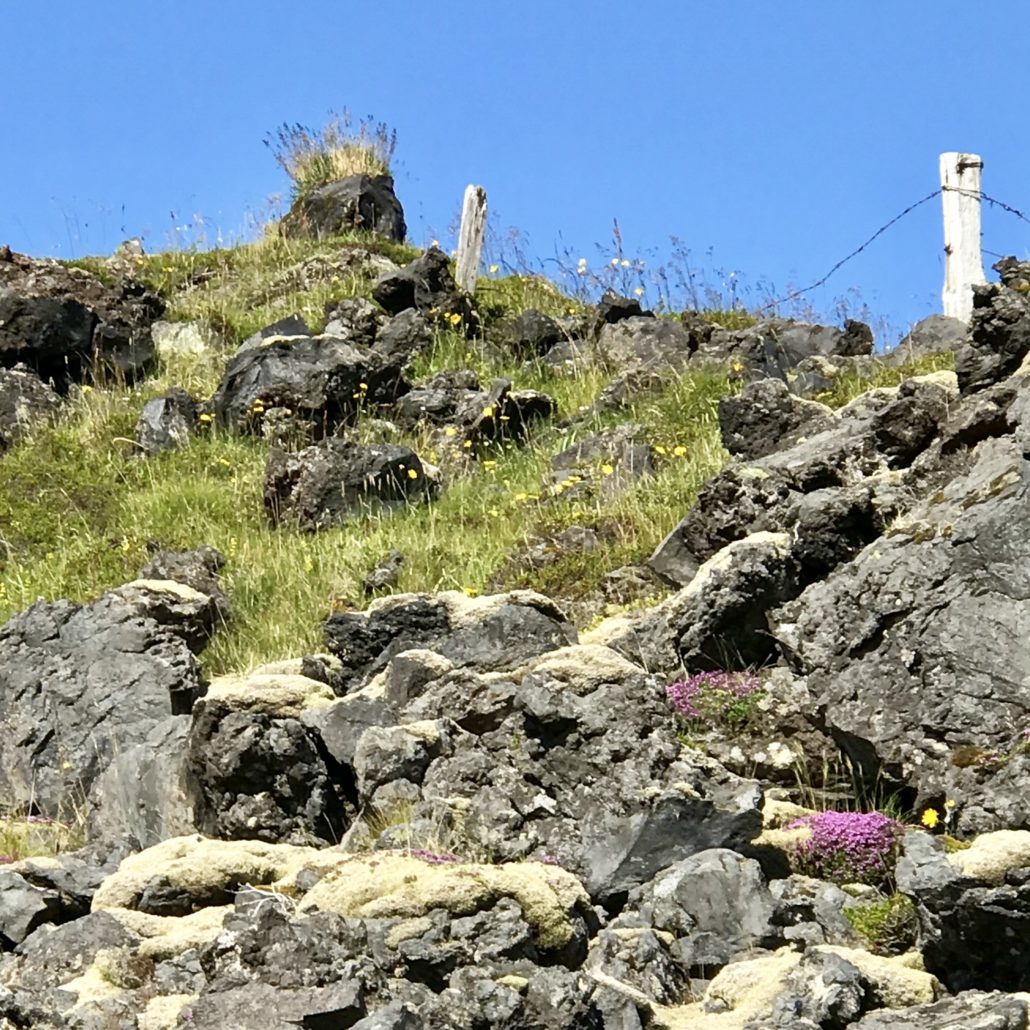Mindfulness Meditation for Anxiety: Both to Reduce it … & to Increase our Ability to Bear it

Like many of you, I am trying to incorporate more mindfulness meditation both in my personal and my professional life. But … in my own life I am not doing so great. Over the last five years I have tried several times to develop my own practice. Recently I was reminded that as a therapist it isn’t great to be preaching mindfulness meditation for anxiety to clients, when it isn’t something that I am myself working on. I am feeling confident these days, and almost ready to try again. Currently, I’m in the “preparing to act” stage of change!
As I prepare, I am working on my own self compassion. Part of this means reminding myself that mindfulness meditation treats our brain like a muscle. Much like lifting weights, it isn’t necessarily about reaching a finish line. It is in the attempts, in the striving, in the work, that those muscles are strengthened.
During the times when I have guided clients through a mindfulness meditation for anxiety, it always seems to turn out so well. They are struck by new realizations. They notice things that provide such wonderful fodder for processing their difficult emotions. Just yesterday, after coming out of a mindfulness exercise, a client said “I learned that what was bothering me wasn’t quite as bad as I was making it out to be”.
Two Different Ways to Approach the “Problem”
Talk therapy is usually what is called “top down” work. We start with the brain, and hope that it translates to the body. We process our thoughts and emotions in a very brain based (cognitive) way. Cognitive Behaviour Therapy (CBT) is usually an example of this. By learning how to think a little differently, we start to feel better.
In contrast, mindfulness is different – it is an example of what we call “bottom up” work. It’s all about paying attention to what is happening in our body in the present moment. When you are anxious, what do you notice? When we can regulate our body’s responses, we can find the perspective and objectivity we need to deal with any of the distressing thoughts in our minds.
Body … mind … body … mind … body. With some clients it might help to start with the top, with others the bottom.
Before you Begin
As part of my work with clients, I have been drawing lately on a simple exercise to help with fear, worry and anxiety. The rationale for this exercise comes from the following two ideas:
- Mindfulness can retrain our brain to lower anxiety. By refocusing on the present (which is usually pretty safe) we turn our attention away from the past or the future (the thoughts that we are finding distressing).
- More counterintuitively, mindfulness can also increase our capacity to bear anxiety. Sometimes that is called “distress tolerance”. By staying with the distressing emotion, not avoiding or running away, and giving ourselves some comfort and care … we learn what we are capable of. We grow in confidence. It becomes less scary.
Refocusing on the present … while staying with what’s worrying us. Both at the same time. Two sides of the same coin.
Before undertaking the following, consider what might be bringing up the strongest worry or anxiety for you right now. Is it a person? An event? A specific environment? Whatever it is, we will be calling it forth during this exercise.
Also, a word about the following phrase “Real But Not True”. Your distressing, judgemental thoughts and physical feelings are real! But it’s also important to remember that your rationale for holding on to these thoughts and feelings are only based on “sound bytes” … not objective truth. There is so much more to what makes you who you are. You can never know it all. Believing these thoughts and feelings creates behaviours that then bring about exactly what we are afraid of. Consider that there are many ways of looking at difficult triggers in our lives.

A Simple Mindfulness Meditation for Anxiety Exercise*
Take a few moments to be still. Congratulate yourself for taking some time for meditation practice.
Start with your eyes open, taking a moment to notice your surroundings. What colours and shapes do you see? Pay attention to anything you might smell, these might be good smells or bad smells. What about your sense of touch? What textures do you observe? Finally, observe the sounds in your environment. Can you hear traffic? Birds? The sounds of a ticking clock?
All of these observations can just happen, without needing to react or do anything about them. For example, notice that the sound reaches your ears naturally, and they don’t fold over and push away what they hear …
Now, close your eyes and bring your awareness to your breath … wherever you might feel it the strongest. You might notice the air moving in and out of your nose. Or you might notice your chest, or your belly, rising and falling. Or you might feel air rushing down the back of your throat.
There is no need to visualize, count, or figure out the breath. Just be mindful of breathing in and breathing out. Without judgement, just watch the breath ebb and flow like waves in the sea. There is no place to go and nothing else to do, just be in the here and now, noticing the breath – just living life one inhalation and exhalation at a time.
Next, bring to mind something that makes you anxious. Imagine that you are about to be in this situation, or in contact with this person. If you can’t find any anxiety, generate a scary thought or an image to help conjure it up. We want to get the anxiety going strongly enough to be able to practice feeling it, but not to be overwhelming.
What kind of thoughts are you having? Are they about trying to problem solve? Planning ahead? Mental judgement? A voice? Some images? … Consider that your thoughts are a form of fear thinking. They are Real, But Not True. They are only thoughts. You can still choose whether to listen to them or not.
Now, bring your awareness below your neck and drop into your body. Become mindful of the physical sensations you might be experiencing. Notice wherever you feel the most vulnerability in your body – this might take shape as a pressure, heat, or tightness. You might feel it in your forehead, or jaw. It might be present in your neck or shoulders, in your chest or belly. It might be most present somewhere below the waist. Does it have a shape? A color?
You don’t need to judge it as good or bad. Just notice how it feels.
Once you’ve got some anxiety going, acknowledge its presence, wherever it lives in your body. Give it a mental nod of recognition and familiarity. Just breathe into that place in your body where you feel it the most.
If the sensation of anxiety starts to fade, do whatever you need to do to bring it back.
Continue to observe whatever is happening in your body right now. Where do you most feel the fear? What does that place need the most? Breathe into that fear. Accept it. By accepting it, you accept yourself.
Keep breathing, and …
… keep practicing just welcoming and feeling the fear.
From time to time, attention may wander away. When you notice this, simply acknowledge where you went, and then gently bring your attention back. Breathe normally and naturally, without manipulating the breath in any way, just be aware of the breath as it comes and goes.
Now, offer yourself some comfort or care. What message might be most comforting? What does your anxious self most need to hear right now? It might be “you are fine in this moment”, or “I’m with you”. Or it might be “that’s then, now is now”. Experiment with placing your hand on your heart …
… As we near the end of this meditation, take some moments to notice what is changed. How does your body feel? Turn your attention observing the contact of your feet on the floor. What about your weight on the [surface beneath you]? Does it feel soft/hard underneath you?
Next, I want you to open your eyes once again, and take some time to notice what is around you – this might be light, shapes, sounds. What can you hear now? What do you notice? Has the quality of these sensations changed at all?
Finally, congratulate yourself for taking this time to be present, realizing that this is an act of love. May we be at peace. May all beings be at peace.
Finally,
I have learned that fighting and/or avoiding the thing that is upsetting me usually makes makes it worse. (Remember the fight or flight reaction?) This holds true both for our external as well as our internal triggers. For example, as a parent I learned that pushing my kids usually meant they pushed back harder. Instead, if I softened my responses, and took the time to listen to what they were saying, they usually softened theirs.
So this means that by taking time to listen to our body, staying aware of the worry, and present in the anxious moment, we can learn how to slow down our responses. In turn, the worry and anxiety will usually lessen in its intensity, and/or our self confidence will grow. This point is driven home by a personal hero, Viktor Frankl, a Holocaust survivor and author of “Man’s Search for Meaning” (a short easy read). He said,
“Between stimulus and response there is a space. In that space is our power to choose our response. In our response lies our growth and our freedom.”
As I embark on your own mindfulness journey, it helps to remember the words of another famous writer. Mark Twain said “the worst things in my life never happened”. I love this. Again, it reminds me of the client (mentioned at the beginning of this blog) who found out she was making a bigger deal of it than she needed to.
So, what about you? What did you notice? What came up for you? Were you, like her, a bit surprised that the thing you were worried about was not as bad as you thought? Or perhaps you might have felt the opposite, too overwhelmed, such that it was hard to come back down after. (Maybe you need to pick something smaller?)
When you feel frustrated, remember that it takes practice to decondition your body’s responses to stressors. I am trying to remind myself of this too! It is a muscle that needs time to build, and time to maintain. This exercise, with practice, can help with that. In order to make mindfulness meditation a little easier, many people use apps. There are so many choices out there – do you have any favourites?
Further Growth & Help
*When I wrote this exercise, I drew heavily on the work of Ruth Buczynski, Tara Brach and Ron Siegel. I have also pulled content that can be found in the “Mindfulness Based Stress Reduction Workbook” (2010) as well as the book, “Leave Your Mind Behind” (2007). Contact me for more information, or if you want to check out these sources on your own.
If you tried this exercise and found it to be a little too overwhelming, you might need a little extra help. In sessions with clients I can adapt these strategies as needed. Reach out today.



Leave a Reply
Want to join the discussion?Feel free to contribute!